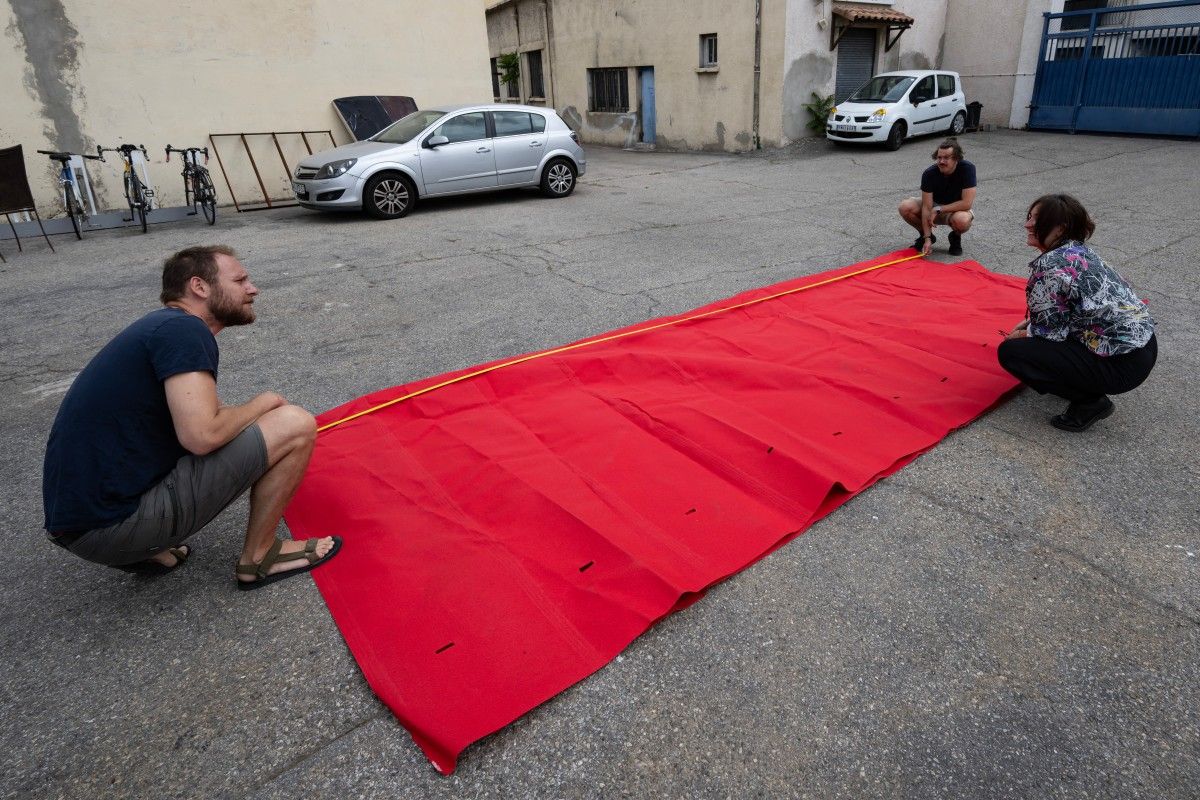
The iconic red carpet of the Cannes Film Festival is getting a second chance in Marseille. Local artists and designers are transforming it into unique creations—while also helping to shrink the event’s environmental footprint.
Walked on for fifteen days by the biggest stars in global cinema, the iconic red carpet of the Cannes Film Festival is now getting a second life in Marseille. Designers, theater troupes, and fashion collectives are repurposing the material into new creative works.
“We sell it as a basic fine red carpet, not as the Cannes red carpet,” said Jeanne Ré, coordinator at La Réserve des Arts, an association that manages waste from the creative industries. The festival pays the organization to upcycle the carpet after the event.
“We’re not using it as a marketing ploy—it’s sold at the same price regardless. The goal is to make it accessible to as many members as possible,” Ré added. “These are materials that were never meant to be reused. By giving them a second life, we’re helping to reduce the festival’s environmental impact—something the organizers are fully aware of.”
The famous red carpet is resold at just one euro per kilogram—“That’s 33 cents per square meter. You can’t beat that!” Ré said.
At the association’s 300-square-meter warehouse in one of Marseille’s working-class northern neighborhoods, a wide range of salvaged materials from theaters, production agencies, and fashion shows are restored and sold at prices roughly three times lower than market rates, explained Bonnie Guespin, the organization’s sales manager.
“With this Cannes carpet, we make classic handbags, wine bottle totes, bucket hats, eyeglass cases—really unique pieces,” said Elsa Ramouni-Yordikian, a longtime customer of La Réserve des Arts and secretary of the association Les Nippones, which has been reusing rolls of the carpet for over four years.
Ramouni-Yordikian recently showcased her creations made from the 2024 red carpet in a Marseille exhibit titled Dress Like a Movie Star.
“The fact that it comes from such a well-known festival and is being reused locally—that really means something to us,” she explained. “It’s not the highest quality material, which is exactly why we work with it.”
In her view, “production of this type of synthetic fabric is never going to stop—as long as there are festivals, expos, trade shows. So we have to find ways to reuse it.”
From this year’s Cannes Film Festival (May 13–24), about 1.5 tons of red carpet were salvaged—replaced daily during the event—as well as wooden planks, posters, and plastic banners.
In a corner of the warehouse, several bundles of carpet lie stacked on pallets, wrapped in black trash bags. The fabric is torn, scuffed from heels and stair edges, stapled, taped, and sometimes even damp. It’s already seen a lot.
But the Marseille branch of La Réserve des Arts, with its team of five employees, is hard at work cleaning and preparing it for reuse.
“By working with us, the festival agrees to slightly increase its budget—because what we do, and the expertise we bring, is worth more than industrial recycling machines,” Ré said. “If we weren’t here, the carpet would just be shredded and melted down into plastic.”
By Bouchra BERKANE / AFP




Comments